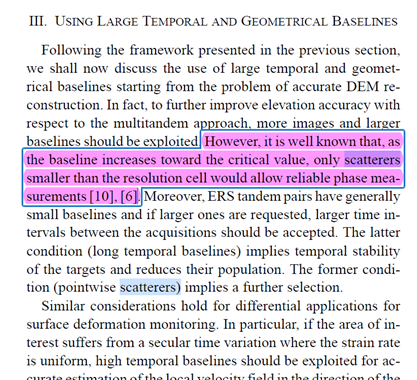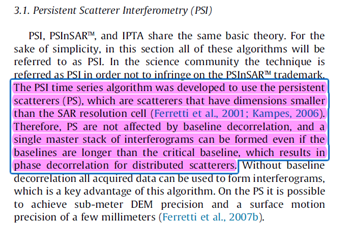Is there a difference between PS and PSI algorithms?
PS refers to the surfaces which act as persistent scatterers. PSI is the technique to retrieve deformation or displacement based on these scatterers.
A nice review on the different aspects and the exact terminology was published by Crosetto et al. (2016):
Could you help me understand this concept if possible ?
According to Ferretti 2001, the meaningfulness of the phase measurements are related to the size of the scatterers with respect to the resolution cell and the perpendicular baseline

And according to B. Osmanoğlu et al,. 2016 The persistent scatterers must be smaller than the resolution cell which makes the baseline decorrelation not problematic.

I couldn’t quite understand what the relationship is between the scattere’s dimentions with respect to the resolution cell and the perpendicular baseline
I think it is saying in effect that PS smaller than the resolution cell are not affected by baseline decorrelation, and for them reliable phase measurements are possible even if very long baselines (longer than the critical baseline) are used.
I do appreciate your reply, thank you very much
Is it possible for particular targets acting as point scatterers to be larger than the resolution cell if the system produces high resolution imagery? or is the speckle effect an imminent phenomenon in all SAR images.
Well, Persistent Scatterers can be very large, for example big corner reflectors, roofs etc. and certanly larger than the resolution cell. I would not use the term “point scatterer” with them.